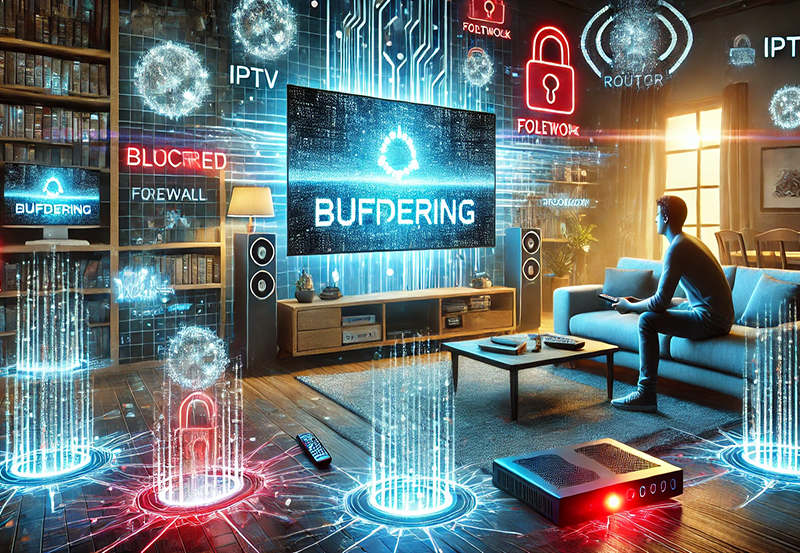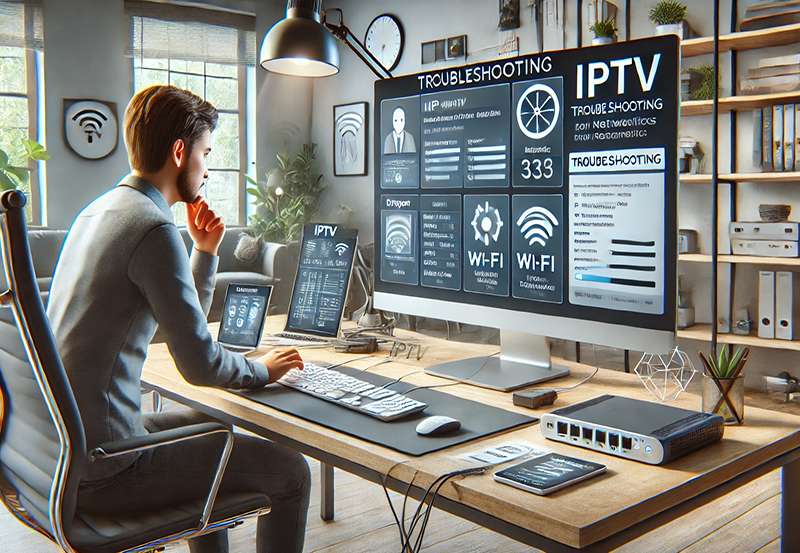IPTV (Internet Protocol Television) offers a flexible and modern way to stream TV content over the internet. However, dealing with compatibility issues on different devices can sometimes be a challenge. From smart TVs to smartphones, tablets, and set-top boxes, each device may require a different approach for setup and troubleshooting. In this guide, we’ll explore common IPTV compatibility problems across various devices and offer solutions to ensure smooth streaming.
Buy 1 Year IPTV Subscription Now
1. Understanding Device Limitations
Different devices come with unique hardware and software limitations that can affect IPTV compatibility. For instance:
- Smart TVs: While many smart TVs support IPTV apps, not all models are compatible with every app or format. Samsung, LG, and Sony TVs, for example, often have specific app stores that may not include your desired IPTV app.
- Android Devices: Android smartphones, tablets, and Android TV boxes are typically more flexible with app installations, but not all IPTV apps are optimized for every Android version or device model.
- iOS Devices: Apple devices, like iPhones and iPads, may face restrictions in app availability and customization due to Apple’s closed ecosystem.
- Streaming Devices (Firestick, Roku, etc.): These devices usually have a limited selection of apps and may require sideloading or workarounds to run certain IPTV services.
2. Choosing the Right IPTV App for Your Device
Selecting the correct app is key to avoiding compatibility issues. Here’s a breakdown of apps that work well across devices:
- Smart IPTV: Ideal for many smart TVs, this app supports M3U playlists but requires a one-time activation fee.
- TiviMate: A popular option for Android devices and TV boxes. It offers a sleek interface and supports multiple playlists.
- GSE Smart IPTV: Works on both Android and iOS devices, providing flexible options for streaming IPTV content.
- IPTV Smarters: A widely-used app for Android, iOS, and smart TVs, offering both live TV and VOD (Video on Demand).
Ensure that the app you choose is available on your device’s app store or can be sideloaded if necessary. Check for regular updates and compatibility with the latest operating system versions.
3. Common Compatibility Issues and Fixes
a) App Crashes or Doesn’t Load Properly
When an IPTV app crashes or fails to load, it can be due to outdated software, incompatibility, or device storage limitations. To address this:
- Update the App: Ensure the app is updated to the latest version to avoid bugs.
- Clear Cache/Data: Clear the cache or data in the app settings, especially on Android devices.
- Check for Storage: Ensure your device has enough storage available. Streaming apps may require significant space for temporary data.IPTV Black Screen Fixes: Diagnosing and Solving Display Problems
b) Unsupported Video Formats
Some IPTV services provide streams in formats that aren’t supported by every device or app. If you encounter an “unsupported format” error:
- Switch to VLC or MX Player: These media players support a wide range of video formats and can be linked with most IPTV apps.
- Check Stream Settings: If the app allows, adjust the stream quality settings to a format that’s compatible with your device.
c) Buffering and Streaming Lag
Buffering can be due to both device limitations and internet connectivity issues. To improve streaming performance:
- Switch to a Wired Connection: Devices like smart TVs and set-top boxes often perform better when connected via Ethernet rather than relying on Wi-Fi.
- Use a VPN: In some cases, IPTV streams may be blocked by ISPs. Using a VPN can bypass these restrictions and improve performance.
- Lower Video Quality: If your device struggles to stream in high quality, lowering the resolution (from 4K to HD) can help improve playback.
4. Device-Specific Solutions
a) Smart TVs
Some smart TVs, especially older models, may not have native IPTV apps available in their app stores. For such cases:
- Install Third-Party Apps: Use apps like Smart IPTV or SS IPTV via USB or directly from the TV’s web browser.
- Use an External Device: If your TV doesn’t support any IPTV apps, consider using a streaming device (Firestick, Android TV box) to run the app externally.Troubleshooting Guide for IPTV Router Settings: Maximizing Bandwidth
b) Android TV and Firestick
These devices typically offer a wide selection of IPTV apps but may require sideloading for unsupported apps. Here’s how to sideload:
- Enable ‘Unknown Sources’: Go to settings and enable unknown sources to install apps from APK files.
- Use Downloader App: Install the Downloader app to fetch APK files and install IPTV apps that aren’t available in the Play Store or Amazon Store.
c) iOS Devices
iOS devices face more restrictions due to Apple’s security policies, but apps like IPTV Smarters and GSE Smart IPTV are available for both iPhones and iPads. If you encounter difficulties:
- Ensure App Compatibility: Double-check that the app supports the latest iOS version.
- VPN: For regions where IPTV apps are restricted, using a VPN might allow you to access the app or streams.
5. Best Practices for Avoiding Future Issues
- Regular Updates: Keep both your IPTV app and device software updated to avoid compatibility problems.
- Choose Reliable IPTV Providers: Ensure your IPTV provider supports multiple devices and formats, offering flexibility and consistent service.
- Backup Playlists: Always keep a backup of your M3U playlists to easily restore settings when switching devices or apps.
Dealing with IPTV compatibility issues across various devices doesn’t have to be frustrating. By selecting the right app, addressing common issues like buffering or format errors, and using device-specific solutions, you can ensure smooth and reliable IPTV streaming. Whether you’re using a smart TV, Android box, or iPhone, following these steps will help you overcome most compatibility problems and enjoy uninterrupted IPTV service.





